#ServerSideRendering
Explore tagged Tumblr posts
Text
Front-End Development: Building the Interface of the Future
Front-end development is at the heart of creating user-friendly and visually appealing websites. It involves translating designs into code and ensuring that web applications are responsive and interactive. In this article, we explore the key aspects of front-end development, essential skills, and emerging trends in the field.
What is Front-End Development?
Front-end development focuses on the user interface (UI) and user experience (UX) aspects of web development. It involves creating the part of the website that users see and interact with, using a combination of HTML, CSS, and JavaScript.
Core Technologies
HTML (HyperText Markup Language): HTML is the foundation of web pages, defining the structure and content, such as headings, paragraphs, and images.
CSS (Cascading Style Sheets): CSS is used to style and layout web pages, controlling aspects like colors, fonts, and spacing to create an attractive and consistent look.
JavaScript: JavaScript adds interactivity and dynamic content to web pages, enabling features like form validation, animations, and user input handling.
Popular Frameworks and Libraries
React: A JavaScript library for building fast and dynamic user interfaces, particularly single-page applications.
Angular: A comprehensive framework for building large-scale applications with a structured and modular approach.
Vue.js: A flexible framework that is easy to integrate into projects and focuses on the view layer of applications.
The Role of a Front-End Developer
Turning Designs into Code
Front-end developers take designs created by UI/UX designers and turn them into code. This involves creating HTML for structure, CSS for styling, and JavaScript for functionality, ensuring the design is faithfully implemented and functional across various devices and browsers.
Ensuring Responsiveness
With the growing use of mobile devices, it’s crucial that websites work well on screens of all sizes. Front-end developers ensure that web applications are responsive, meaning they adapt smoothly to different screen resolutions and orientations.
Optimizing Performance
Performance optimization is key in front-end development. Developers reduce file sizes, minimize load times, and implement lazy loading for images and videos to enhance the user experience.
Maintaining Cross-Browser Compatibility
A successful front-end developer ensures that web applications work consistently across different browsers. This involves testing and resolving compatibility issues to provide a uniform experience.
Implementing Accessibility
Making web content accessible to people with disabilities is a critical aspect of front-end development. Developers adhere to accessibility standards and best practices to ensure that everyone can use the website effectively.
Essential Skills for Front-End Developers
Mastery of Core Technologies
Proficiency in HTML, CSS, and JavaScript is fundamental. Front-end developers must be able to write clean, efficient code that is both maintainable and scalable.
Familiarity with Modern Frameworks
Knowledge of modern frameworks like React, Angular, and Vue.js is crucial for building contemporary web applications. These tools facilitate the creation of complex, dynamic interfaces.
Version Control with Git
Version control systems like Git are essential for tracking changes in the codebase and collaborating with other developers. Mastery of Git allows for efficient project management and collaboration.
Understanding of UX/UI Design
An understanding of UX/UI principles helps developers create user-friendly and aesthetically pleasing interfaces. This includes knowledge of user behavior, usability testing, and design basics.
Problem-Solving and Debugging
Front-end development often involves troubleshooting issues related to layout, functionality, and performance. Strong problem-solving skills are essential to identify and resolve these challenges efficiently.
Emerging Trends in Front-End Development
Progressive Web Apps (PWAs)
PWAs combine the best features of web and mobile applications, offering fast loading times, offline capabilities, and push notifications. They provide a native app-like experience within the browser.
WebAssembly
WebAssembly allows developers to run high-performance code in web browsers. It enables complex applications like games and video editors to run efficiently on the web, expanding the possibilities of front-end development.
Server-Side Rendering (SSR)
Server-side rendering improves the loading speed of web pages and enhances SEO. Frameworks like Next.js (for React) facilitate SSR, making it easier to build fast and search-friendly applications.
Single Page Applications (SPAs)
SPAs load a single HTML page and dynamically update the content as users interact with the application. This approach provides a smoother user experience, similar to that of a desktop application.
Component-Based Development
Modern frameworks emphasize component-based architecture, where UI elements are built as reusable components. This modular approach enhances maintainability and scalability.
AI and Machine Learning Integration
Integrating AI and machine learning into front-end development enables the creation of smarter, more personalized applications. Features like chatbots, recommendation engines, and voice recognition can significantly enhance user engagement.
#FrontEndDevelopment#WebDevelopment#UIUXDesign#HTML#CSS#JavaScript#ReactJS#Angular#VueJS#ResponsiveDesign#WebDesign#UserExperience#WebPerformance#WebAccessibility#SinglePageApplication#ProgressiveWebApp#WebDevelopmentTrends#ModernWebDev#FrontendFrameworks#CodeNewbie#LearnToCode#WebDevCommunity#CodingLife#TechTrends#WebComponents#WebAssembly#ServerSideRendering#DigitalDesign#UIComponents#WebOptimization
3 notes
·
View notes
Text
A Guide to Understanding and Using React Server Components
Learn how React Server Components enhance performance by splitting rendering between server and client. This guide explains their benefits, use cases, and how to implement them effectively in modern web apps.
#ReactServerComponents#ReactJS#WebDevelopment#FrontendPerformance#ServerSideRendering#ModernWebApps#JavaScript#ReactDevelopers#FullStackDevelopment#React2025
0 notes
Text

RW Infotech is recognized as one of the best Next.js development companies in the USA, delivering fast, scalable, and SEO-optimized web applications. With a team of expert React and Next.js developers, we specialize in building high-performance, server-rendered websites and headless applications that drive real business results. Whether you're a startup or an enterprise, our custom Next.js solutions ensure faster load times, seamless user experiences, and future-ready architectures. Trusted by global clients, RW Infotech empowers your digital presence with cutting-edge Next.js technology.
#NextJS#NextJSDevelopment#NextJSExperts#WebDevelopmentUSA#RWInfotech#JavaScriptDevelopment#HeadlessCMS#ReactDevelopers#ServerSideRendering#TechAgencyUSA#WebAppDevelopment#FullStackDevelopment#FrontendDevelopment
0 notes
Text
In today’s web development world, Search Engine Optimization (SEO) is crucial for the success of any website. For React developers, SEO can be a challenge because React is a client-side JavaScript framework, meaning that the content is rendered dynamically on the client side. This can pose problems for search engine bots that may not fully execute JavaScript or render the content properly.
To solve this, Server-Side Rendering (SSR) has become an essential approach. SSR allows web pages to be pre-rendered on the server, providing search engines with HTML content that can be easily indexed.
In this guide, we will walk you through the process of setting up SSR in React using Next.js, a powerful framework built on top of React. By the end, you'll understand how SSR works in Next.js and how it helps improve SEO.
#React#NextJS#ServerSideRendering#SSR#SEO#WebDevelopment#ReactApp#NextJSApp#WebPerformance#SEOOptimization#ReactJS#WebAppDevelopment#FrontendDevelopment#ReactSEO#SearchEngineOptimization#ReactSSR#JavaScriptFrameworks#WebAppPerformance#NextJSFeatures#ReactRouting#JavaScript#WebOptimization#PageSpeed#ReactBestPractices#FullStackDevelopment#ReactDevelopment#NextJSDeployment
1 note
·
View note
Text
A Complete Guide for Server Side Rendering in React in 2024
Server side rendering is a powerful tool for React app developers to improve performance by rendering the web pages on the server.
1 note
·
View note
Text
0 notes
Text
PMT01: Scaffold nano & Trowel pico
Scaffold nano & Trowel pico v1.1.0 have been released tonight.
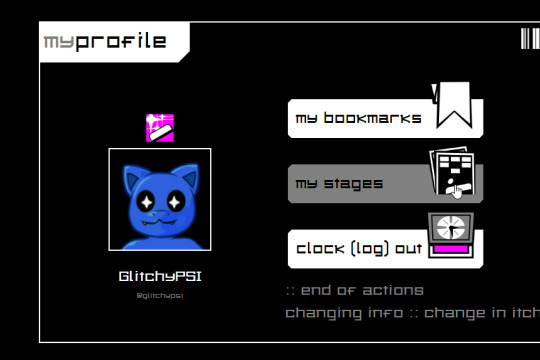

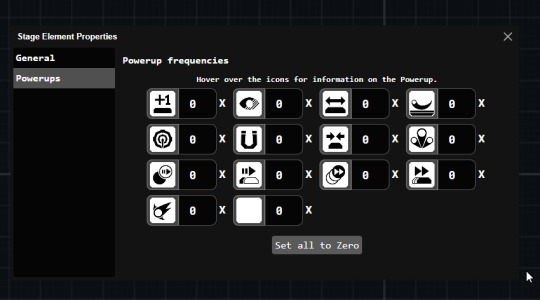
Updates add a myStages to Scaffold, and QoL improvements to the powerup editing experience in Trowel pico.
Now that it's out, I'd like to also take this moment to talk about the development and release of both.
One year minus one day ago I had announced in Twitter I would work on the level editor for the demo version of BRICKBREAKER SPRINT (nano) so fans could breathe in more life to the game even in its limited state and to also showcase how much it can do with its limited toolset at the current time.

The reasoning for a completely separate technology version was simple, WebGL. WebGL in Unity is so limited for even the most basic things (I had to install a package to support cross-app copy/paste before nano+'s release!) and I said "hey, might as well give the multiplatform users something to be able to edit with, doesn't need to be just windows which is what the currently unpolished-ish trowel desktop is!"
But then it hit me that the same limitations would likely make it hell for me to support just levels downloaded as files (internally stored with "bxtp" extension btw :) ) so then... I came at a crossroads
just say FKIT and not do it, make ppl wait for BB Lite
still say FKIT and kickstart the foundation of the online service that I had planned since the first design iteration of the game
guess what I took?

I don't regret it.
Currently, Scaffold's login system is attached to itch.io. In the future, this will use my own account system (called Luna, still in development)
Now then... developing Scaffold's frontend was a challenge in itself, because I'm a masochist. I chose yet another technology to make the frontend in, this time Svelte, Sveltekit as backend saying "okay, no more fear of ServerSideRendering now that I can afford a VPS for this"
but... Svelte has been an absolute joy to work with. Its learning curve even smoother than React's (my first frontend framework, which powers cometSpectrum!), and I got everything rolling very quickly
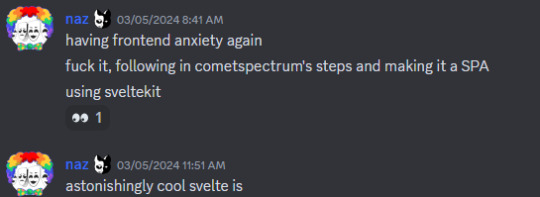
At first, I was going to use my regular website design language, but it's kinda jank, so I said NO and started from scratch with a simpler façade. For the style I wanted to pursue... it was perfect. Some people have complimented the graphic aspect of the site, and I'm happy I could deliver exactly what I wanted. (and yes the icons being in opposite directions compared to bbsprint's UI is entirely on purpose)
BTW, the site is made in such a way that a BB theme could be used as the site's theme and every color will change except for PNG icons, i love it (this functionality is used for people using their OS's Light theme)
This is actually the first made-by-me website project that has "public" facing write actions to a database and stores actual files. It works... very well, and I am very happy about it. It's like a combination of everything I've learnt up to this point, down to API design and interop between programs.
I did say this was the foundation for Scaffold, and I plan for this game to keep Scaffold as its prime way of getting stages, even when getting to storefronts like Steam or GOG. Kind of like an osu! situation.
You're at this part of the message... wanna see how Scaffold's logo used to look like?
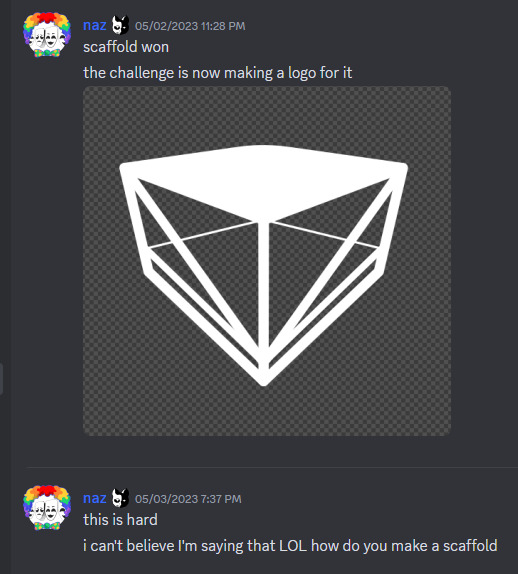
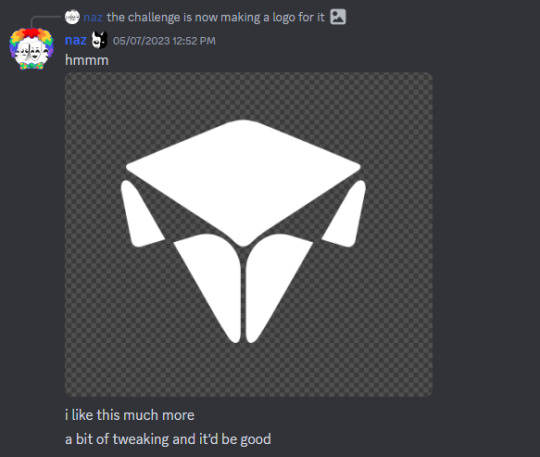
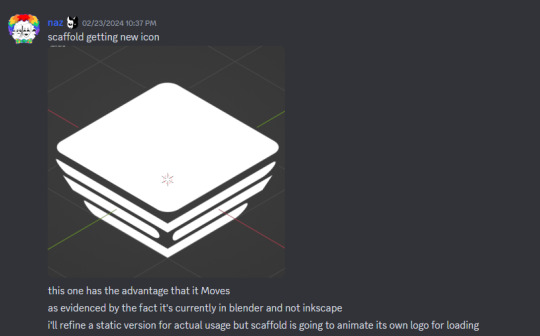
5 notes
·
View notes
Link
What is server-side rendering and just how crucial is it to your website delivering smooth user experience on every page?
1 note
·
View note
Photo

. Have anything to add? Feel free to leave your questions or ideas or just say hi in the comments :) Happy !🎉 💙🌬️❄️☃️ ———————————————————————— ⭐ CAREER CHANGE TIPS ———————————————————————— 📌 How to become a self-taught developer? ⚡ Useful links and roadmaps in my bio! ———————————————————————— 📌 Follow: @rehman_coding 💼 Portfolio: www.a-rehman.com ⚙️ GitHub: https://github.com/MuhRehman 💎 LinkedIn: https://www.linkedin.com/in/abdul-rehman-%E2%9C%94-8611505b/#reactjs. ........... .... #hulu #tailwindcss #css #nextjs #ssr #serversiderendering #server #React #clone #Papa #papafam #styledcomponents #Developer #webdevelopment #coder #code #reactjs #redux #materialui #firebase #subscribe #papafam #love #reactrouter #firebase #fullstack #dev #webdev #hostinger https://www.instagram.com/p/Cb3YH07gXiu/?utm_medium=tumblr
#reactjs#hulu#tailwindcss#css#nextjs#ssr#serversiderendering#server#react#clone#papa#papafam#styledcomponents#developer#webdevelopment#coder#code#redux#materialui#firebase#subscribe#love#reactrouter#fullstack#dev#webdev#hostinger
0 notes
Link

#ssr#react#serversiderendering#creolestudios#hongkong#mobileappdevelopment#technology#reactssr2021#ssrinreact#serversiderenderingreactapp#appdevelopmentcompanyhongkong#hirereactjsdevelopers
0 notes
Video
youtube
Server Side Page Fragment Composition Design Pattern for Microservices E... Full Video Link https://youtu.be/RkghOb236u0Hello friends, new #video on #serversideuicomposition #page #frgament #composition #designpattern for #microservices #tutorial for #api #developer #programmers with #examples are published on #codeonedigest #youtube channel. @java #java #aws #awscloud @awscloud @AWSCloudIndia #salesforce #Cloud #CloudComputing @YouTube #youtube #azure #msazure #codeonedigest @codeonedigest #microservices #microservices #microservicesarchitecture #whataremicroservices #microservicestutorial #serversiderendering #serversiderenderingvsclientsiderendering #serversiderenderinginreactjs #serversiderenderingreactnextjs #serversiderenderingreactjs #serversideuirendering #serversidepagecomposition #microservicedesignpatterns #microservicedeploymentonkubernetes #microservicedesignpatternsspringboot #microservicedesignpatternsjava #designpattern
#youtube#design pattern#microservices#microservice#microservice design pattern#java design pattern#software design pattern
1 note
·
View note
Photo

Need to know how to make #Angular7 seo friendly websites? Read this blog post to know what is #ServerSideRendering and how to use it on #AngularMaterial based website. Explore it now! Click here to read more: http://bit.ly/2TRNvaG
0 notes
Text
How I made it easy to develop on #VueJS with #ServerSideRendering https://t.co/SVboHXRvpv #NodeJS https://t.co/NLIC3WUemw
How I made it easy to develop on #VueJS with #ServerSideRendering https://t.co/SVboHXRvpv #NodeJS pic.twitter.com/NLIC3WUemw
— Macronimous.com (@macronimous) March 7, 2020
from Twitter https://twitter.com/macronimous March 07, 2020 at 05:24PM via IFTTT
0 notes
Text
Nuxt.jsとHerokuでお手軽にSSRを体験する - memo.md [はてなブックマーク]
Nuxt.jsとHerokuでお手軽にSSRを体験する - memo.md
2017 - 12 - 06 Nuxt.jsとHerokuでお手軽にSSRを体験する Vue.js フロントエンド Nuxt.js Heroku これは、 Misoca Advent Calendar 2017 の6日目のエントリーです。 SSR フロントエンドを駆使したアプリケーションを構築すると、 どこかのタイミングで SSR (ServerSideRendering)と向きあうことがある。 ...
kjw_junichi
from kjw_junichiのブックマーク http://ift.tt/2B3dR3z
0 notes
Photo

React Server Side Rendering
#serversiderendering#react#SSR#ReactSSR#app#html#server#serversiderenderingwithReact#ReactSSR2021#creolestudios#ClientSideRendering#CSR#reactapp#ReactDOMServer
0 notes
